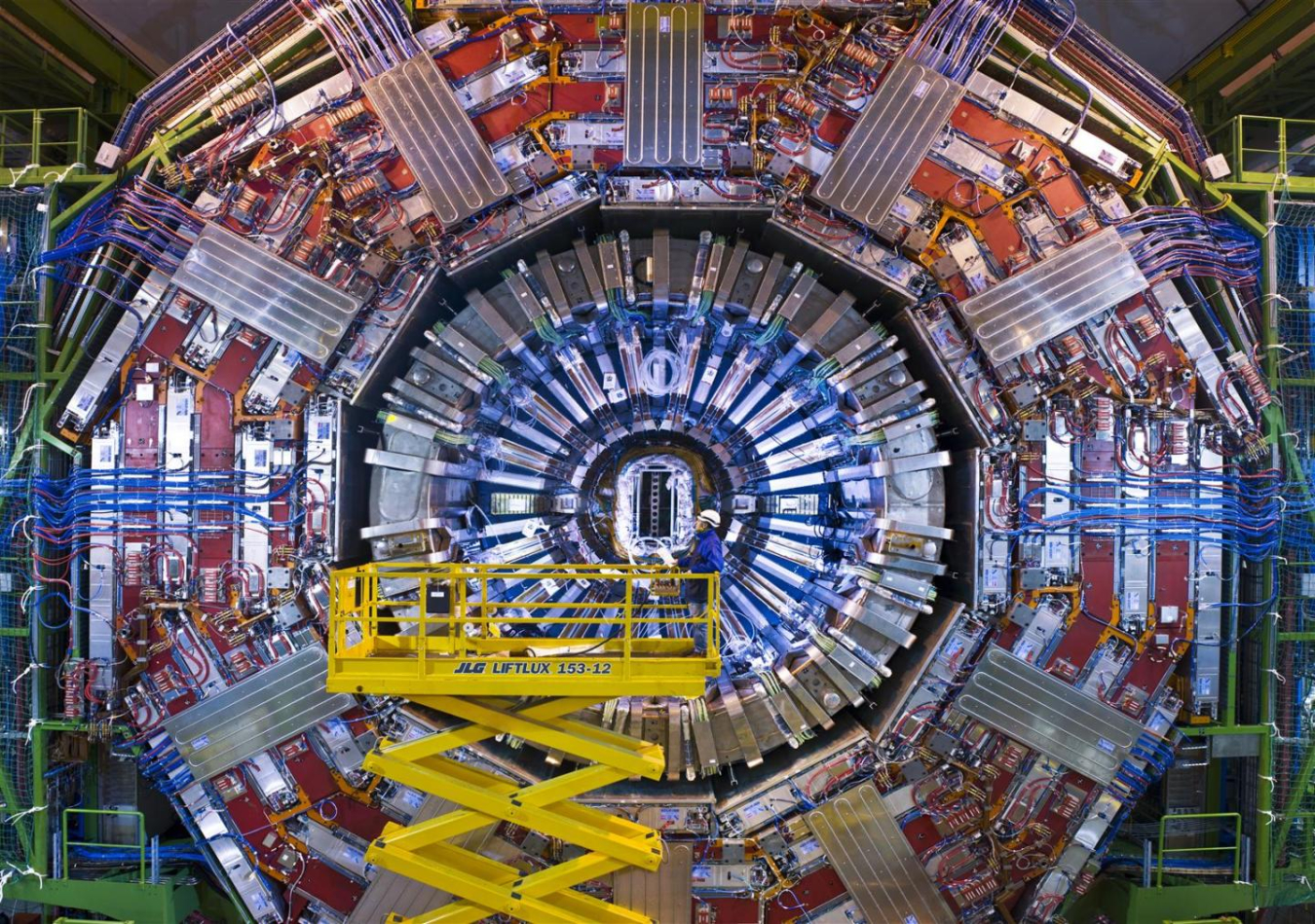The science hidden in Stranger Things' science fiction

The Compact Muon Solenoid (CMS) detector in the Large Hadron Collider at CERN helps scientists search for extra dimensions. | Photo by CERN.
Stranger Things was unquestionably the show of the summer last year. It captured more viewers than almost every other buzzed-about Netflix original series, and lit up social media for months. The show also sparked interest in the real science behind some of its more outlandish moments, particularly when it came to the subject of extra dimensions.
Yes, we’re talking about the Upside Down, the nightmarish realm where our heroes venture to find the missing Will Byers. The Upside Down is described in the show as existing in an extra dimension alongside the ones we can see, an extra dimension that can be accessed through a portal. The Upside Down obeys few of the rules of our dimension and seems like an element of the story that is much more fiction than science.
But is it? Actually, there is real, hard science behind the idea of extra dimensions, and the Department of Energy’s Office of Science is involved in studying this very thing, in both theory and experiment. It turns out the ideas presented in the Stranger Things episode “The Flea and the Acrobat” are pretty much spot on. In the show’s analogy, an acrobat on a tightrope can move only forward or backward, but a flea on that same tightrope, working on a much smaller scale, can move all around the rope, in other dimensions, seeing more of them.
Since we’re the acrobat in this analogy, the question is how to test if extra dimensions really exist. One way of seeing evidence for other dimensions involves gravity – specifically, the theoretical particle associated with the force of gravity, called the graviton. One theory suggests that the graviton may move in all dimensions, not just the ones we live in. And if we can create gravitons at the Large Hadron Collider at CERN, we might be able to see evidence of them leaving our dimensions for other ones.
Gravity “leaking” into extra dimensions could explain why it is such a weak force – gravity becomes strong in places we can’t see, while the other forces (such as electromagnetism) are constrained to our familiar three spatial dimensions. With the LHC we can probe what the flea in the above analogy sees, by imaging at incredibly tiny scales. If the full force of gravity is as strong as the other forces are, then colliding high-energy particles in a small region of space would create microscopic black holes – harmless ones that decay in a fraction of a trillionth of a second – which would be evidence of gravity slipping into other dimensions.
The Large Hadron Collider makes it possible to hunt for this evidence, and DOE Office of Science National Laboratories are at the forefront of this research as collaborators from the U.S. are leading efforts at the CMS and ATLAS experiments at the LHC.
That’s not all the Office of Science labs are working on that might sound like science fiction. For example, we’re involved in the hunt for dark matter, the invisible and as-yet undetectable stuff that makes up a quarter of our universe. We’re trying to understand dark energy, the force that drives the expansion of the universe. We’re building gigantic detectors to understand the neutrino, a particle which may help us understand why we live in a world dominated by matter and not antimatter.
In short, with DOE support, real-world scientists today are venturing into terrain almost stranger than fiction—in a serious search for answers to the mysteries of the actual universe we inhabit.
More Related Articles and Information
Listen to our Direct Current podcast episode about the secrets of extra dimensions and more!